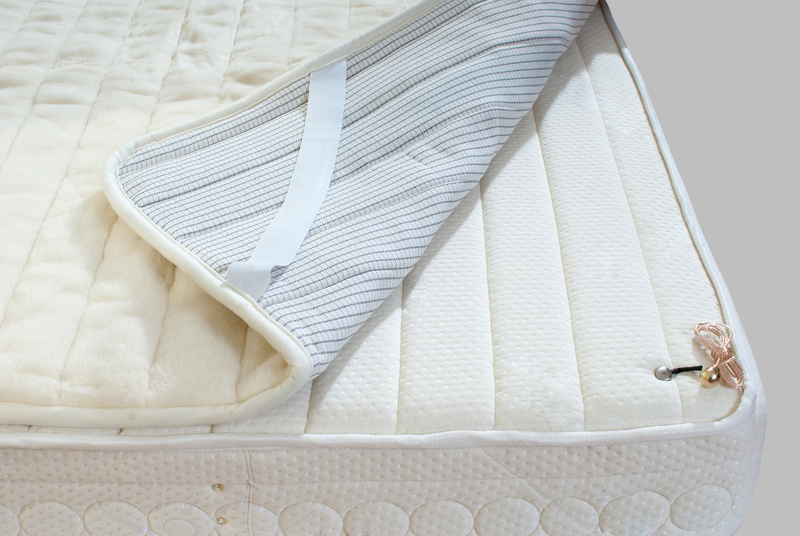Breathe Easy: Prioritizing Air Quality for Health in Homes and Offices
Posted on 30/05/2025
Breathe Easy: Prioritizing Air Quality for Health in Homes and Offices
Air is the invisible foundation of our daily lives, yet its quality often goes overlooked in the places where we spend most of our time: our homes and offices. By understanding and managing indoor air quality, we can create healthier, more comfortable environments for all.
Understanding the Importance of Indoor Air Quality
While most of us are aware of outdoor air pollution, the quality of indoor air can have an even more significant impact on our well-being. We spend upwards of 90% of our time indoors, making it vital to ensure the air we breathe is as clean as possible. Studies have shown that indoor air can be two to five times--and sometimes up to 100 times--more polluted than the air outside!
- Homes: Where families live, eat, and sleep.
- Offices: Where employees spend hours focused on work.
With modern homes and workplaces being tightly sealed for energy efficiency, the circulation of fresh air is often limited. This can lead to a buildup of pollutants, allergens, and toxins that can negatively impact your health and productivity.
Air Quality: A Crucial Component of Health and Productivity
Clean air is essential not only for comfort, but also for optimal cognitive and physical performance. Poor air quality in homes and offices can contribute to:
- Eye, nose, and throat irritation
- Chronic allergies and asthma attacks
- Headaches, dizziness, and fatigue
- Increased stress and decreased productivity
- Long-term respiratory and cardiovascular diseases
Prioritizing good air quality can make a marked difference in your energy levels, focus, and long-term health outcomes.

What Causes Poor Air Quality in Homes and Offices?
Many people assume that pollution is only an outdoor issue, but indoor air pollutants are surprisingly common and come from a wide range of sources. Understanding these threats is the first step toward effective prevention and management.
Common Sources of Indoor Air Pollution
- Building Materials: Paint, solvents, insulation, and furnishings may emit volatile organic compounds (VOCs).
- Household Cleaning Products: Chemicals and fragrances in cleaning products can introduce toxins into the air.
- HVAC Systems: Dust, mold, bacteria, and other particulates can collect and circulate through heating and air conditioning systems.
- Cooking & Combustion: Stoves, fireplaces, and candles can release smoke, carbon monoxide, and other pollutants.
- Poor Ventilation: Fails to remove stale, contaminated air from indoor spaces, leading to accumulation of pollutants.
- Biological Contaminants: Mold spores, pollen, pet dander, and dust mites are typical in households and offices.
- Tobacco Smoke: Remains a leading source of dangerous indoor air toxins.
The Impact of Air Quality on Health and Wellbeing
Breathe easy by recognizing how unseen pollutants can wreak havoc on your health. Poor indoor air quality has been linked to both acute and chronic conditions, affecting people of all ages. Individuals with allergies, asthma, or other respiratory conditions are especially vulnerable.
Short-Term Health Effects
- Irritation of eyes, nose, and throat
- Headaches and dizziness
- Fatigue and difficulty concentrating
- Coughing and sneezing
Long-Term Health Effects
- Respiratory diseases such as asthma, bronchitis, and chronic obstructive pulmonary disease (COPD)
- Increased risk of cardiovascular diseases
- Potentially higher cancer risk due to prolonged exposure to certain toxins
- Weakened immune system, making it harder for the body to fight infections
Studies show that prioritizing high-quality indoor air improves sleep, reduces symptoms of chronic illness, and even enhances workplace productivity and absenteeism rates.
How to Measure Air Quality Indoors
Before you can improve the air you breathe, it's important to assess its current quality. Today, a range of affordable air quality monitors are available for homes and offices. These devices can detect levels of:
- Particulate matter (PM2.5 and PM10): Fine dust and allergen particles
- VOCs: Emissions from paints, cleaners, and furnishings
- Carbon monoxide (CO): Odorless but dangerous combustion byproduct
- Humidity and temperature: Excess moisture can foster mold growth
- Carbon dioxide (CO2): High levels can cause drowsiness and reduced concentration
Check your air quality regularly to identify and address specific concerns in your living or working space.
Steps to Improve Air Quality at Home
Looking to breathe easy in your home? The following steps are proven to make a dramatic difference in indoor air cleanliness and safety.
1. Ensure Proper Ventilation
- Open windows regularly to allow fresh air circulation.
- Use exhaust fans in kitchens and bathrooms to remove moisture and odors.
- Install and maintain whole-house ventilation systems for consistent airflow.
2. Control Sources of Indoor Pollution
- Choose low-VOC or zero-VOC paints and building materials.
- Store chemicals, paints, and cleaning products away from living areas or use natural alternatives.
- Avoid smoking indoors and encourage a smoke-free environment.
- Minimize the use of candles, incense, and other combustion sources indoors.
3. Keep Your Home Clean
- Dust and vacuum your living spaces regularly, using a vacuum with a HEPA filter.
- Control humidity with dehumidifiers to prevent mold growth.
- Wash bedding and curtains frequently to reduce dust mites and allergens.
4. Invest in Effective Air Purification
- Use HEPA air purifiers to remove dust, allergens, and particulates.
- Consider activated carbon filters to reduce odors and VOCs.
- For those with allergies or pets, consider UV or ionizing purifiers, but research effectiveness and safety first.
5. Incorporate Indoor Plants Wisely
- Some plants can help absorb pollutants and improve humidity (e.g., spider plant, peace lily, snake plant).
- Be cautious--plants can also harbor mold or accumulate dust if not maintained.
Strategies to Enhance Office Air Quality
As businesses recognize the importance of healthy office air quality, they are taking steps to prioritize their employees' well-being. Here's how you can create a healthier workplace:
1. Evaluate and Upgrade HVAC Systems
- Regularly check and replace air filters.
- Ensure ducts are clean and free from mold or dust buildup.
- Use high-quality MERV or HEPA filters for optimal protection.
- Install air quality sensors to monitor pollutant levels in real-time.
2. Promote Proper Ventilation
- Open windows and use energy-efficient ventilation systems.
- Encourage short breaks outdoors to increase employee exposure to fresh air.
3. Implement No-Smoking Policies
- Ban indoor smoking and create designated outdoor areas far from entrances.
- Encourage policies that promote healthy behavior and well-being.
4. Reduce Indoor Sources of Pollution
- Limit the use of scented cleaning supplies and air fresheners.
- Choose non-toxic or low-emission building and office materials.
- Ensure newly renovated areas are well-ventilated before occupancy.
5. Engage Employees in Maintaining Air Quality
- Educate staff on the importance of clean air and how their actions can help.
- Encourage reporting of leaks, moisture, or ventilation issues.
The Role of Technology in Air Quality Management
Modern technology offers remarkable solutions to monitor and enhance indoor air. Smart sensors, Wi-Fi-enabled air purifiers, and real-time reporting make it easier than ever to stay on top of air pollution in your living and working spaces.
- Smart Air Quality Monitors: Provide continuous feedback on particulate levels, VOCs, humidity, and temperature.
- IoT-Connected Purifiers: Automatically adjust filtration based on detected pollutant levels.
- Building Automation Systems: Regulate ventilation, humidity, and filtration for optimal air quality.
The ability to automate and monitor your air quality empowers you to respond swiftly to potential issues, ensuring you always breathe easy.

Myths and Misconceptions about Indoor Air Quality
There are many myths surrounding air quality in the home and workplace. Dispelling these can help you focus on what truly matters:
- "If it smells fine, the air must be safe."
Many serious pollutants--like carbon monoxide and radon--are odorless and invisible. - "New buildings have better air quality."
Construction materials, furnishings, and tight seals often make new buildings more polluted than older ones. - "Air purifiers can replace ventilation."
Purifiers help reduce certain pollutants, but fresh air is vital to dilute indoor toxins. - "Indoor plants completely purify the air."
Plants offer only minor benefits and are not a substitute for mechanical filtration or proper ventilation.
Conclusion: Make Air Quality a Priority Today
The air you breathe in your home or office is fundamental to physical, mental, and emotional well-being. Prioritize air quality by identifying pollution sources, maintaining ventilation systems, investing in the best filtration and purification solutions, and taking proactive steps to keep your environment clean and healthy. Whether you're managing a busy household or a thriving office, every effort made to ensure clean indoor air can have dramatic, positive results.
Breathe easy--because your health, and the well-being of those around you, depend on it.




